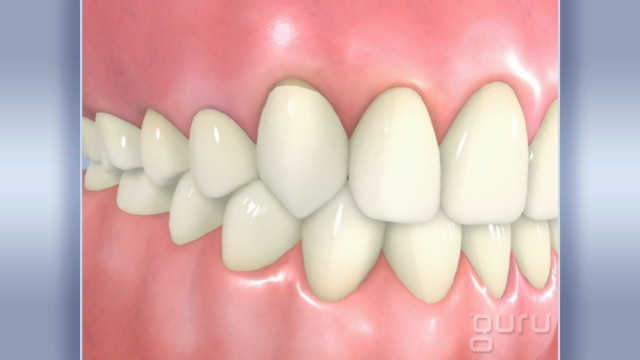
Abfraction
Abfraction lesions are small notches caused by stress (forces) on your teeth. Biting, chewing, clenching and grinding put pressure on your teeth. Over time, this pressure can cause cracks and splits in the outer layer of your teeth. This occurs in the thinnest part of your enamel, near the gumline.
Grinding your teeth puts pressure on them over and over. For this reason, people who grind their teeth are more likely to get abfraction lesions.
Abfraction lesions are fairly common in adults. Older adults are especially likely to have them. They occur more often in the back teeth, called premolars and molars. But they can occur in the front teeth as well. They appear as crescent-shaped or wedge-shaped notches near the gumline.
Teeth with abfraction lesions are not more likely to decay, but they can get weaker over time. Weak teeth may be more likely to break.
Symptoms
Abfraction lesions don’t usually hurt. They affect the enamel, the outer layer of the tooth. In severe cases, the dentin and cementum layers of a tooth may become involved. Dentin is the layer below the enamel. Cementum covers the tooth root instead of enamel. Dentin may be exposed if a crack develops. In these cases, the tooth may become sensitive. Otherwise, the lesions do not cause symptoms.
Prevention
Abfraction lesions are caused by the uneven forces produced when you bite or grind your teeth. Therefore, you usually can’t prevent them. If you grind your teeth, you can wear a night guard to reduce the pressure on your teeth. In some cases, a few teeth get extra pressure because of the way the teeth come together (the bite). Dentists often can fix this kind of problem.
Photo Gallery
- Abfraction




